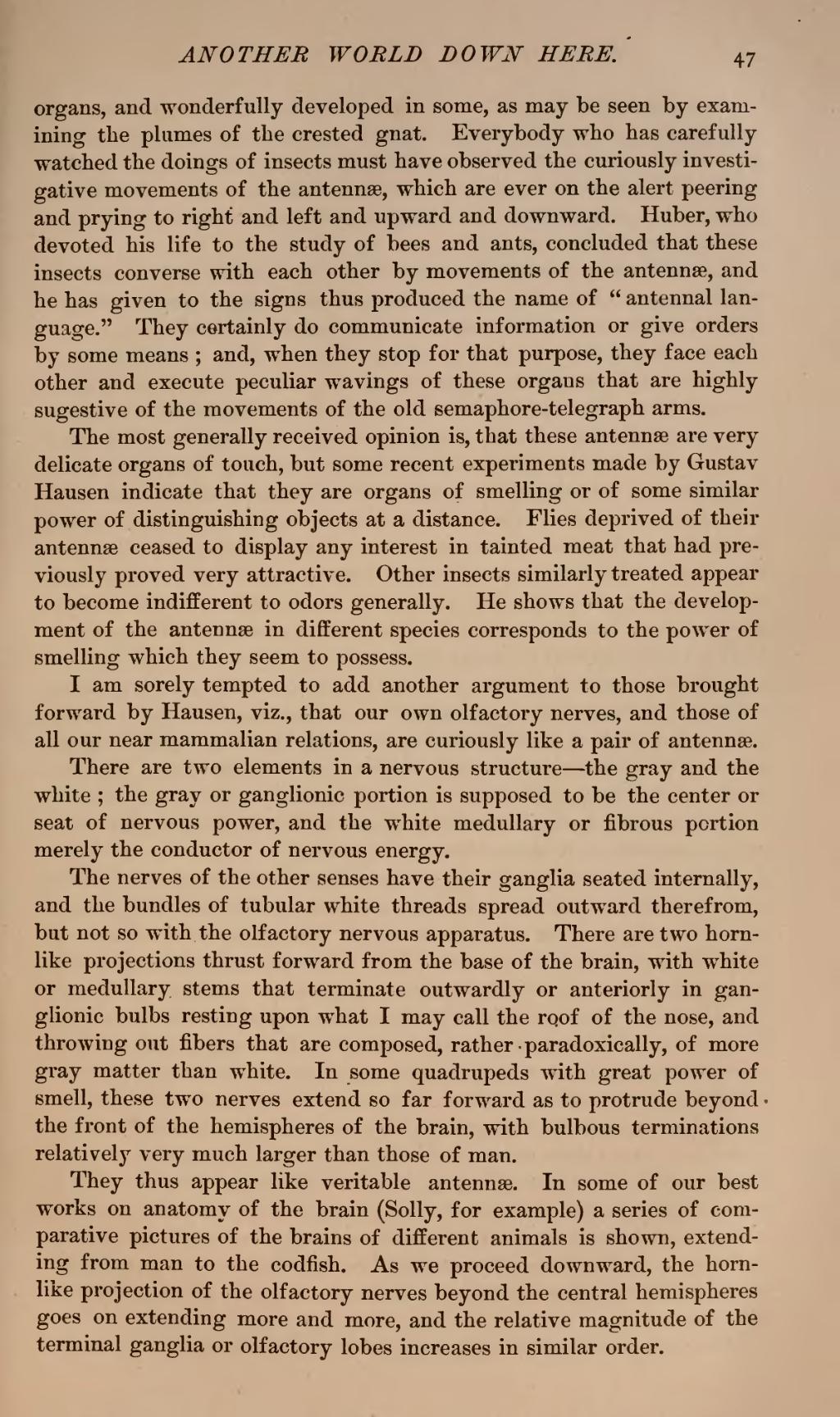organs, and wonderfully developed in some, as may be seen by examining the plumes of the crested gnat. Everybody who has carefully watched the doings of insects must have observed the curiously investigative movements of the antennæ, which are ever on the alert peering and prying to right and left and upward and downward. Huber, who devoted his life to the study of bees and ants, concluded that these insects converse with each other by movements of the antennæ, and he has given to the signs thus produced the name of "antennal language." They certainly do communicate information or give orders by some means; and, when they stop for that purpose, they face each other and execute peculiar wavings of these organs that are highly sugestive of the movements of the old semaphore-telegraph arms.
The most generally received opinion is, that these antennæ are very delicate organs of touch, but some recent experiments made by Gustav Hansen indicate that they are organs of smelling or of some similar power of distinguishing objects at a distance. Flies deprived of their antennæ ceased to display any interest in tainted meat that had previously proved very attractive. Other insects similarly treated appear to become indifferent to odors generally. He shows that the development of the antennæ in different species corresponds to the power of smelling which they seem to possess.
I am sorely tempted to add another argument to those brought forward by Hausen, viz., that our own olfactory nerves, and those of all our near mammalian relations, are curiously like a pair of antennæ.
There are two elements in a nervous structure—the gray and the white; the gray or ganglionic portion is supposed to be the center or seat of nervous power, and the white medullary or fibrous portion merely the conductor of nervous energy.
The nerves of the other senses have their ganglia seated internally, and the bundles of tubular white threads spread outward therefrom, but not so with the olfactory nervous apparatus. There are two hornlike projections thrust forward from the base of the brain, with white or medullary stems that terminate outwardly or anteriorly in ganglionic bulbs resting upon what I may call the roof of the nose, and throwing out fibers that are composed, rather paradoxically, of more gray matter than white. In some quadrupeds with great power of smell, these two nerves extend so far forward as to protrude beyond the front of the hemispheres of the brain, with bulbous terminations relatively very much larger than those of man.
They thus appear like veritable antennæ. In some of our best works on anatomy of the brain (Solly, for example) a series of comparative pictures of the brains of different animals is shown, extending from man to the codfish. As we proceed downward, the hornlike projection of the olfactory nerves beyond the central hemispheres goes on extending more and more, and the relative magnitude of the terminal ganglia or olfactory lobes increases in similar order.

